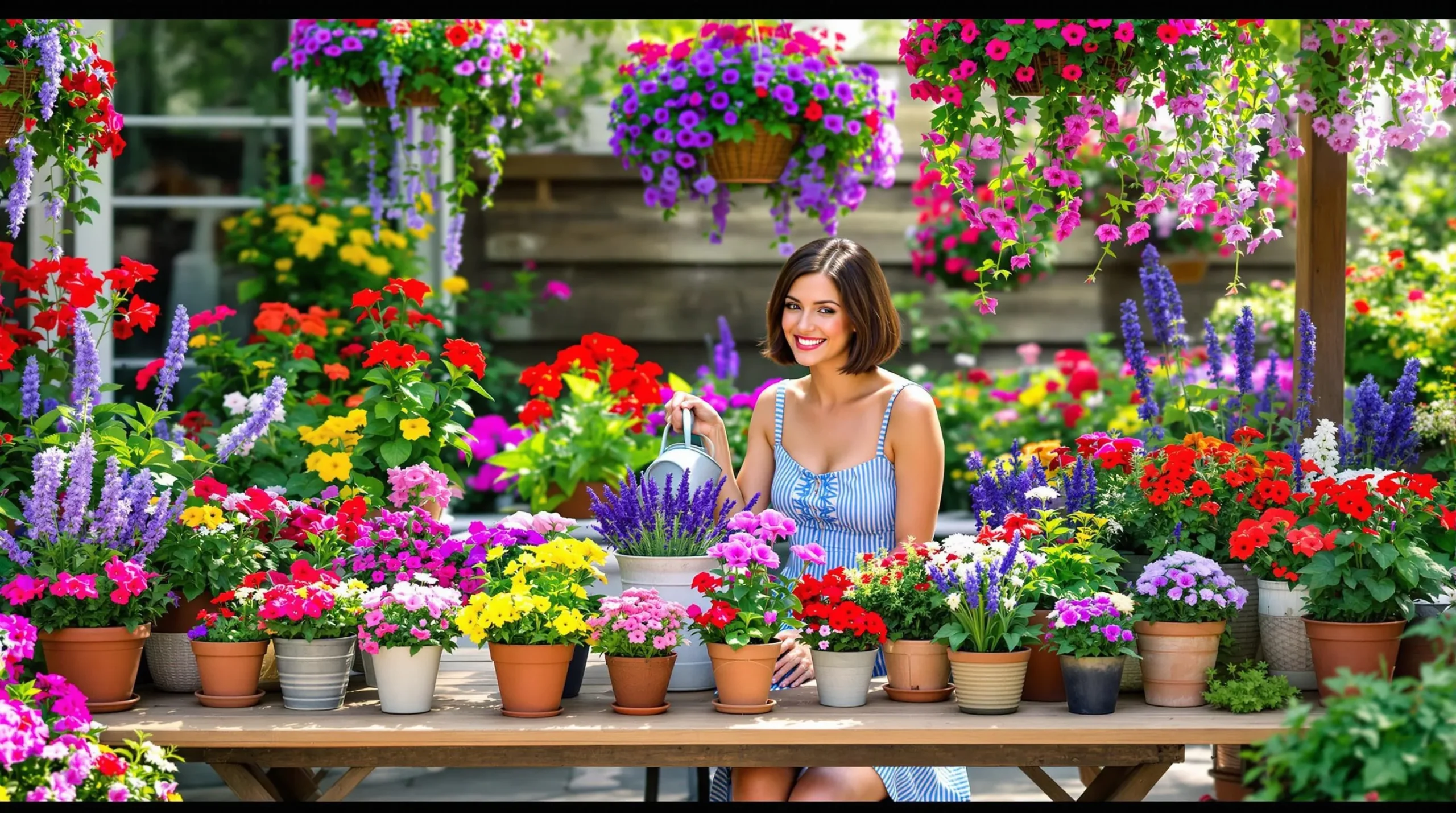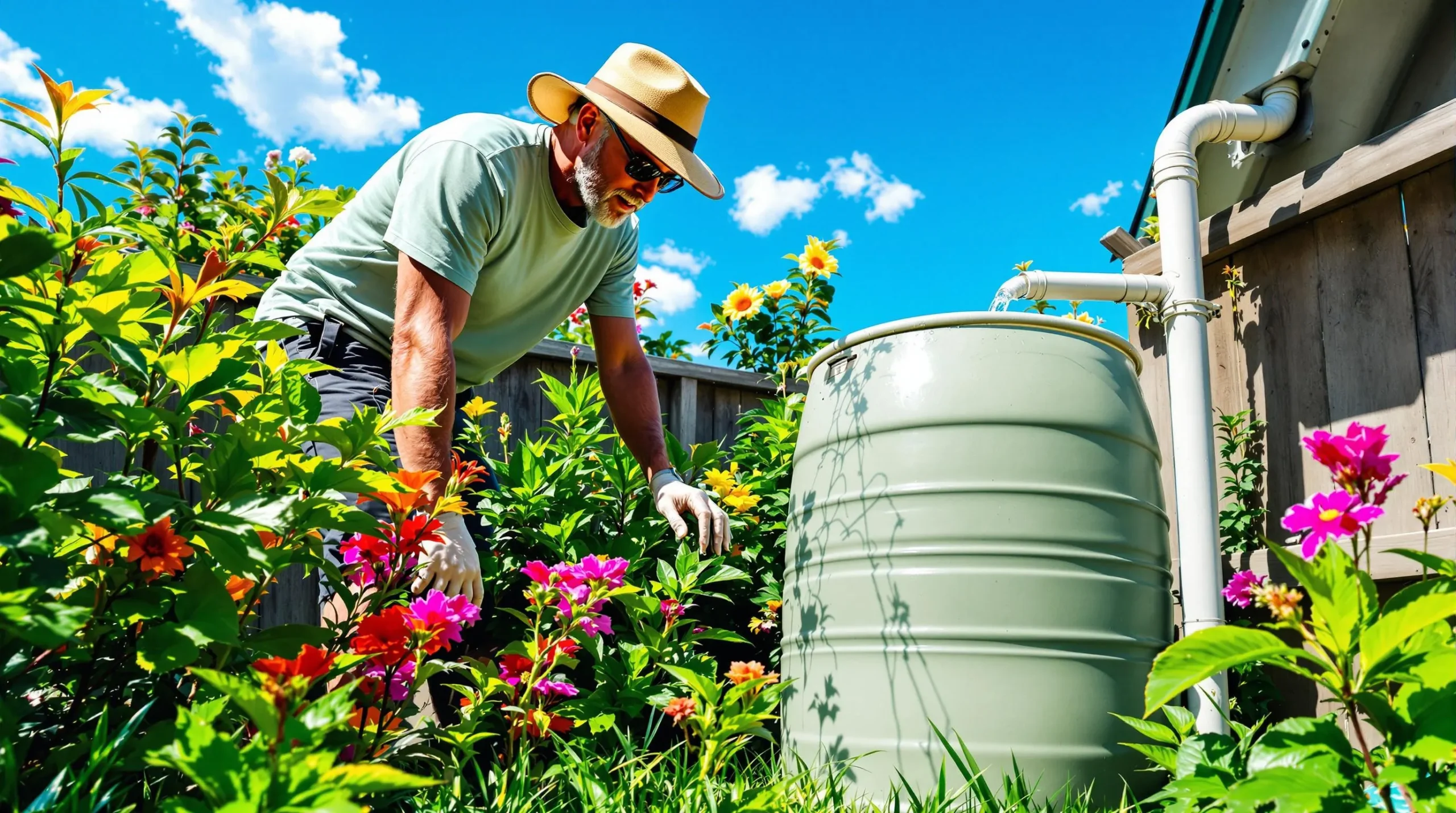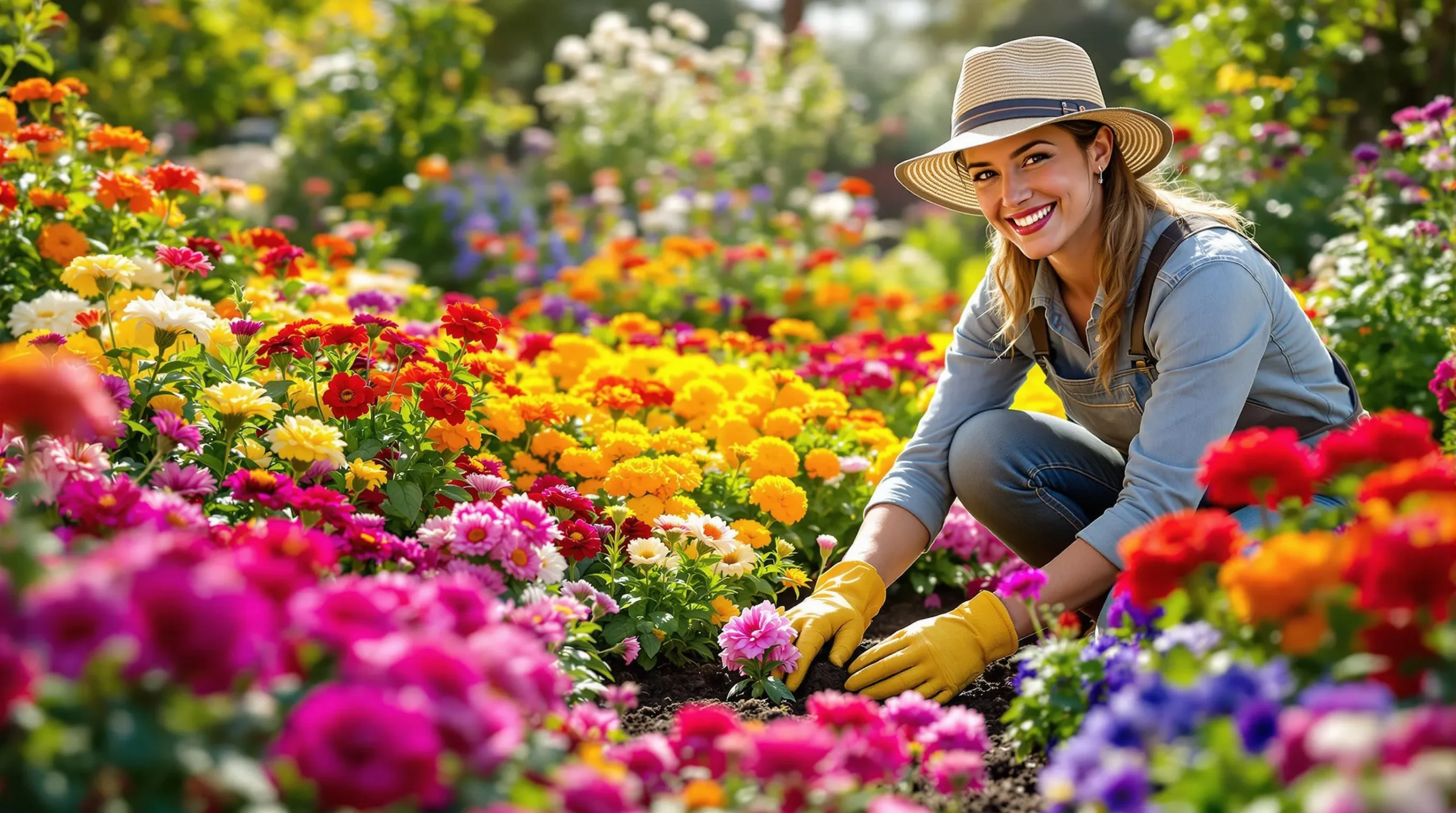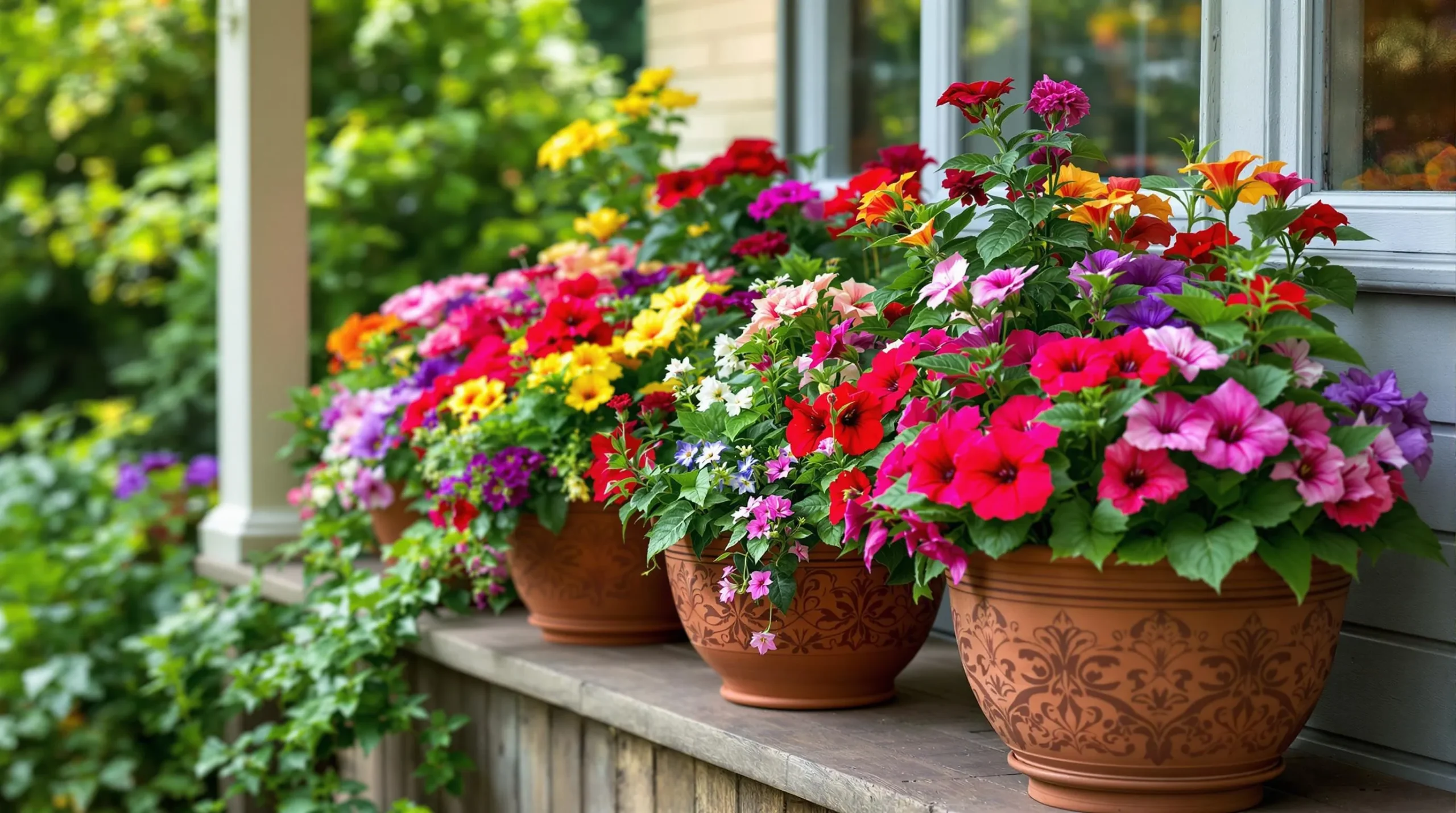10 Clever Herb Garden Ideas for Any Space
- Repurposed Mason Jar Garden: Mount mason jars on a wooden board and hang it on your kitchen wall for an instant herb garden. The clear glass lets you monitor water levels while adding rustic charm to your cooking space.
- Tiered Plant Stand Display: Maximize vertical space with a multi-level plant stand that creates a beautiful cascade of herbs. This solution works perfectly on balconies or patios where floor space is limited.
- Hanging Macramé Planters: Suspend your herbs from the ceiling in stylish macramé holders to create an eye-catching display. These bohemian-inspired planters free up counter space while adding texture to your decor.
- Window Box Herb Collection: Install window boxes on your kitchen sill to grow cooking herbs right where you need them. The natural sunlight promotes healthy growth, and you’ll have fresh ingredients just an arm’s reach away.
- Gutter Garden System: Mount sections of vinyl gutters to a fence or wall to create horizontal growing rows. This budget-friendly option allows you to grow multiple herbs in a small footprint while providing excellent drainage.
- Herb Spiral Design: Build a spiral-shaped raised bed that creates different growing environments in one compact structure. The design naturally creates varied sun exposure and drainage conditions, perfect for herbs with different requirements.
- Shoe Organizer Garden: Repurpose a hanging shoe organizer by filling the pockets with soil and herbs. This vertical solution is perfect for renters as it can hang on a door or balcony railing without permanent installation.
- Teacup Herb Garden: Plant miniature herbs in vintage teacups arranged on a decorative tray. This charming indoor garden makes for a beautiful centerpiece and conversation starter while providing fresh herbs for your tea.
- Pallet Vertical Garden: Transform a wooden pallet into a space-saving herb garden by attaching small pots or planting directly between the slats. This upcycled solution creates a rustic display that works well against exterior walls.
- Rolling Cart Herb Station: Set up a mobile herb garden on a bar cart or utility trolley. This flexible solution lets you move your herbs to follow the sun or roll them indoors during bad weather while keeping all your gardening supplies organized.
Creating a Window Sill Herb Garden
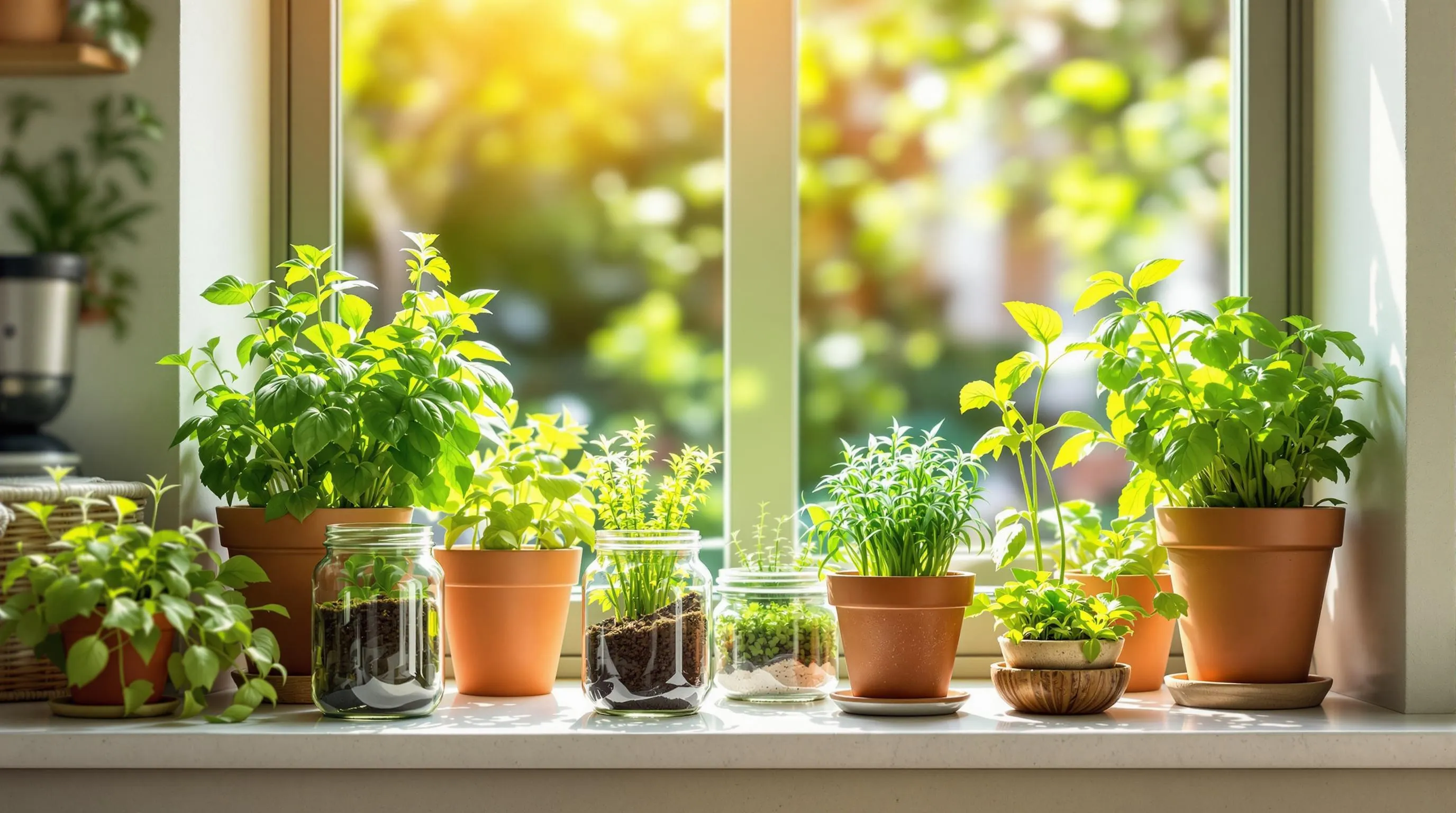
Window sill herb gardens are perfect for urban dwellers or anyone with limited outdoor space. They combine practicality with beauty, allowing you to grow fresh herbs right where you’ll use them most—in your kitchen. With proper planning, your window sill can transform into a thriving mini garden that provides fresh flavors year-round.
Best Herbs for Indoor Window Gardens
Not all herbs thrive equally in indoor conditions. Basil, chives, mint, oregano, rosemary, and thyme are excellent choices for window sill gardens as they adapt well to indoor environments. Basil loves sunny windows and provides continuous harvests when pinched regularly. Mint grows vigorously even in partial sun, making it ideal for east or west-facing windows. Rosemary and thyme require less water and tolerate drier indoor air, perfect for busy gardeners. Parsley and cilantro work well too but need replanting more frequently as they’re shorter-lived. Choose herbs based on your cooking preferences and the light conditions of your exact window location.
Container Options for Window Sills
Your container choices can dramatically impact both the functionality and aesthetic of your window sill garden. Terra cotta pots provide excellent drainage and a classic look but dry out quickly. Self-watering containers work wonderfully for busy households, maintaining consistent moisture levels. Repurposed items like mason jars, tea tins, or coffee mugs add personality but require drainage holes. Consider narrow, rectangular planters designed specifically for window sills to maximize space. Clear glass containers allow you to monitor root health but may encourage algae growth. Whatever containers you choose, ensure they’re sized appropriately for your herbs—at least 6 inches deep for most varieties—and include drainage holes to prevent root rot.
Vertical Herb Garden Solutions
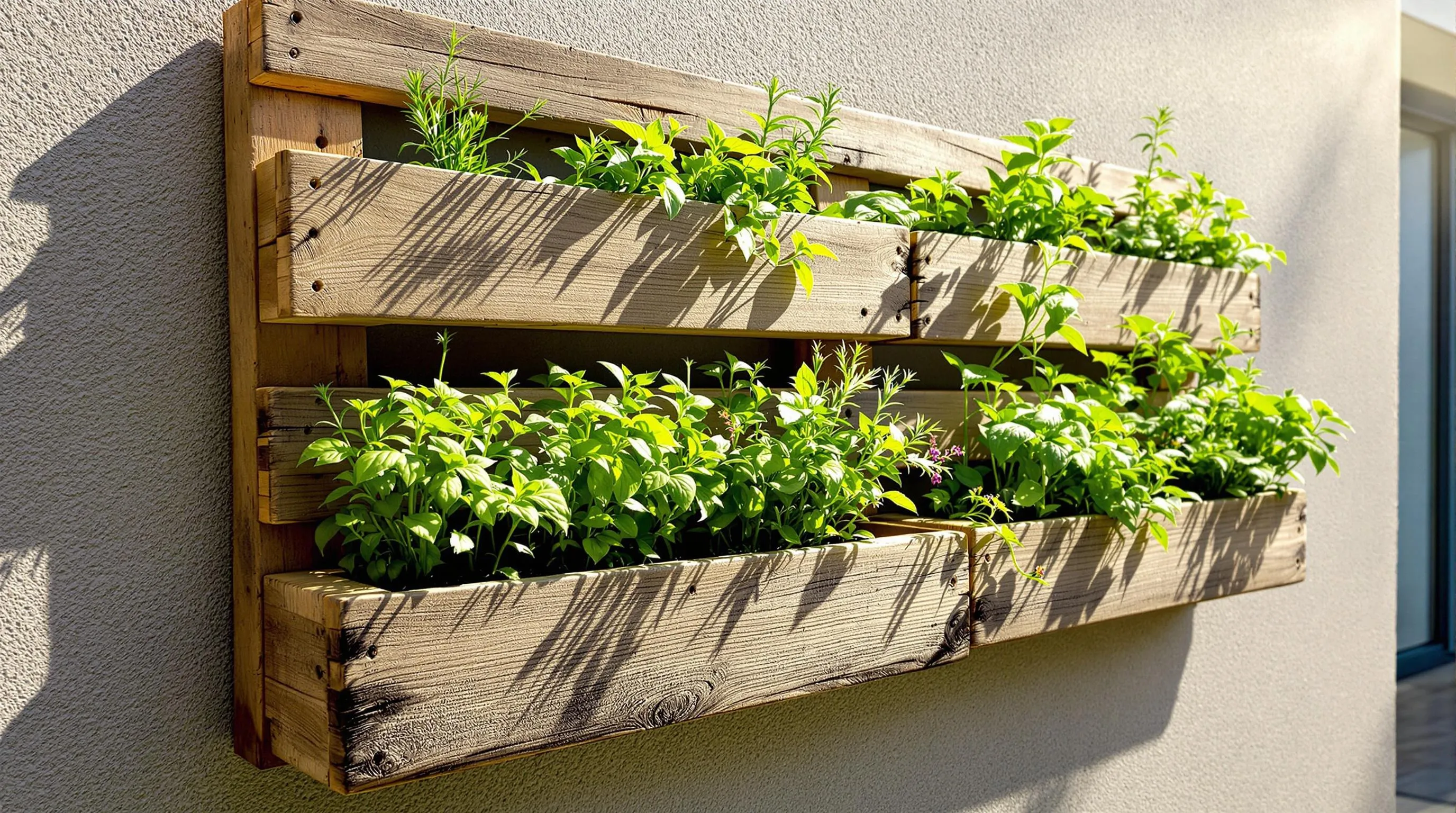
When space is at a premium, going vertical with your herb garden offers practical and stylish alternatives to traditional gardening. Vertical gardens maximize growing space while creating eye-catching displays that can transform walls, fences, or unused corners into productive herb havens.
Pallet Herb Gardens
Transform an ordinary wooden pallet into a space-saving herb garden with minimal effort and cost. Start by sanding rough edges and consider applying a non-toxic sealant if your pallet will be exposed to weather. Line the back and sides with industry fabric to create planting pockets, then fill with quality potting soil. Plant herbs with similar watering needs in each section – rosemary and thyme work well in upper rows where drainage is better, while basil and parsley thrive in lower sections. Mount your finished pallet garden against a sunny wall or fence, ensuring it’s securely fastened. This rustic solution not only maximizes your growing space but also adds charming farmhouse appeal to any outdoor area.
Hanging Pocket Planters
Hanging pocket planters offer versatile answers for growing herbs in limited spaces. These fabric organizers feature multiple pockets perfect for different herb varieties and can be hung on balcony railings, fences, or walls. Look for planters with reinforced grommets and water-resistant materials for durability. When planting, position moisture-loving herbs like mint and cilantro in lower pockets where water naturally collects, while placing drought-tolerant herbs like thyme and oregano in upper sections. The cascading effect creates visual interest while making harvest simple – just snip what you need at eye level. For indoor use, hang these planters near south-facing windows and place a drip tray underneath to catch excess water, maintaining both your herbs and your flooring.
Mason Jar Herb Gardens for Kitchen Countertops
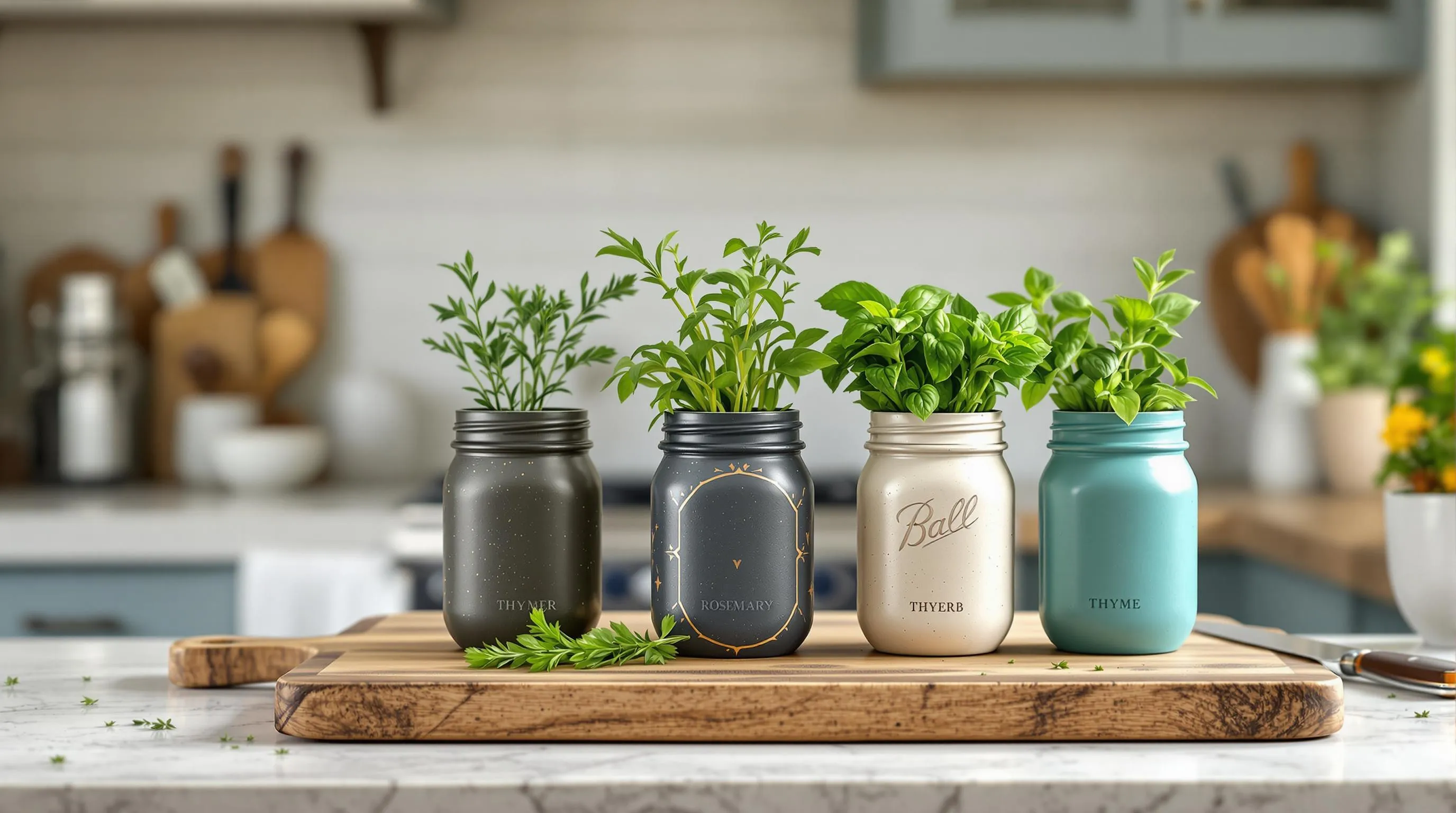
Mason jar herb gardens offer a perfect blend of functionality and style for your kitchen countertops. These compact gardens bring fresh herbs within arm’s reach while cooking and add a touch of rustic charm to your kitchen decor. Creating your own mason jar herb garden is simple and rewarding, allowing you to enjoy fresh flavors year-round.
Decorative Mason Jar Arrangements
Transform ordinary mason jars into eye-catching herb displays with decorative arrangements that complement your kitchen aesthetic. Paint the jars in colors that match your decor—try chalk paint for a farmhouse look or metallic finishes for modern kitchens. Add personalized herb labels using chalkboard tags, wooden stakes, or etched glass techniques. For a cohesive display, arrange 3-4 jars of varying heights on a wooden tray or vintage cutting board. Create visual interest by mixing herbs with different textures and heights, such as tall rosemary, bushy basil, and trailing thyme. These decorative arrangements not only serve as practical herb gardens but also as stunning kitchen centerpieces that showcase your personal style.
Self-Watering Mason Jar Systems
Create efficient self-watering mason jar herb gardens to ensure your kitchen herbs thrive with minimal maintenance. Convert standard mason jars into self-watering planters using wicking systems that deliver consistent moisture to your herbs. Assemble your system by threading cotton rope or strips of felt through a perforated lid insert, with one end in the water reservoir and the other in the soil. Fill the bottom quarter of your jar with water, place the wicking mechanism and soil platform above it, then add potting mix and your herb seedlings. These systems work perfectly for moisture-loving herbs like basil, mint, and cilantro, maintaining ideal hydration levels for up to a week. The clear glass design allows you to easily monitor water levels, eliminating the guesswork of when to refill your herb garden.
Repurposed Container Herb Gardens
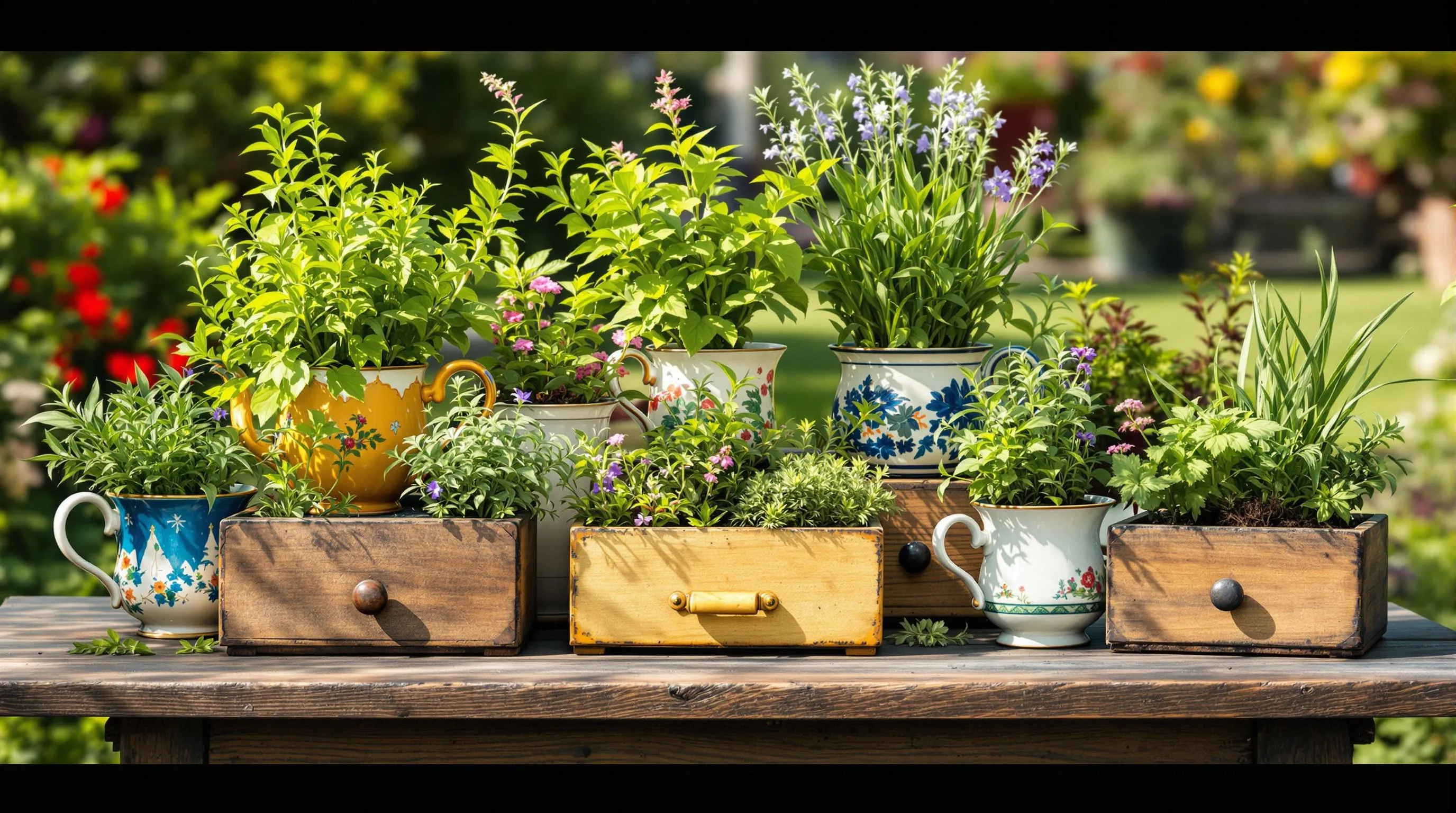
Transform everyday items into charming herb planters to add personality to your garden while reducing waste. Repurposed containers offer unique character that store-bought planters simply can’t match, plus they’re budget-friendly alternatives that showcase your creativity.
Teacup and Vintage Container Gardens
Turn forgotten china into flourishing herb havens by repurposing vintage teacups, teapots, and sugar bowls into miniature herb gardens. These delicate containers work perfectly for smaller herbs like thyme, oregano, and chives. To prepare your teacups, drill small drainage holes in the bottom using a ceramic drill bit, or add a layer of small pebbles before your potting soil. Arrange several teacups on a vintage tray or cake stand to create a stunning herb display for your kitchen windowsill or dining table. The elegant patterns and soft colors of vintage china complement the natural green of herbs, creating a beautiful contrast that serves as both functional garden and decorative accent.
Upcycled Furniture Herb Gardens
Breathe new life into old furniture by transforming them into unexpected herb planters. Old wooden drawers, rustic toolboxes, vintage suitcases, and even worn-out boots can become distinctive herb gardens. For wooden items, add drainage holes and a waterproof liner to prevent rot. An antique dresser with multiple drawers creates a tiered effect perfect for displaying various herb varieties, while a repurposed wooden ladder with pots on each step makes for an eye-catching vertical garden. Even old colanders and metal buckets become instant herb planters with their built-in drainage. These upcycled furniture gardens not only provide a practical growing space but also serve as conversation-starting focal points in your garden or patio area.
Spiral Herb Garden Designs
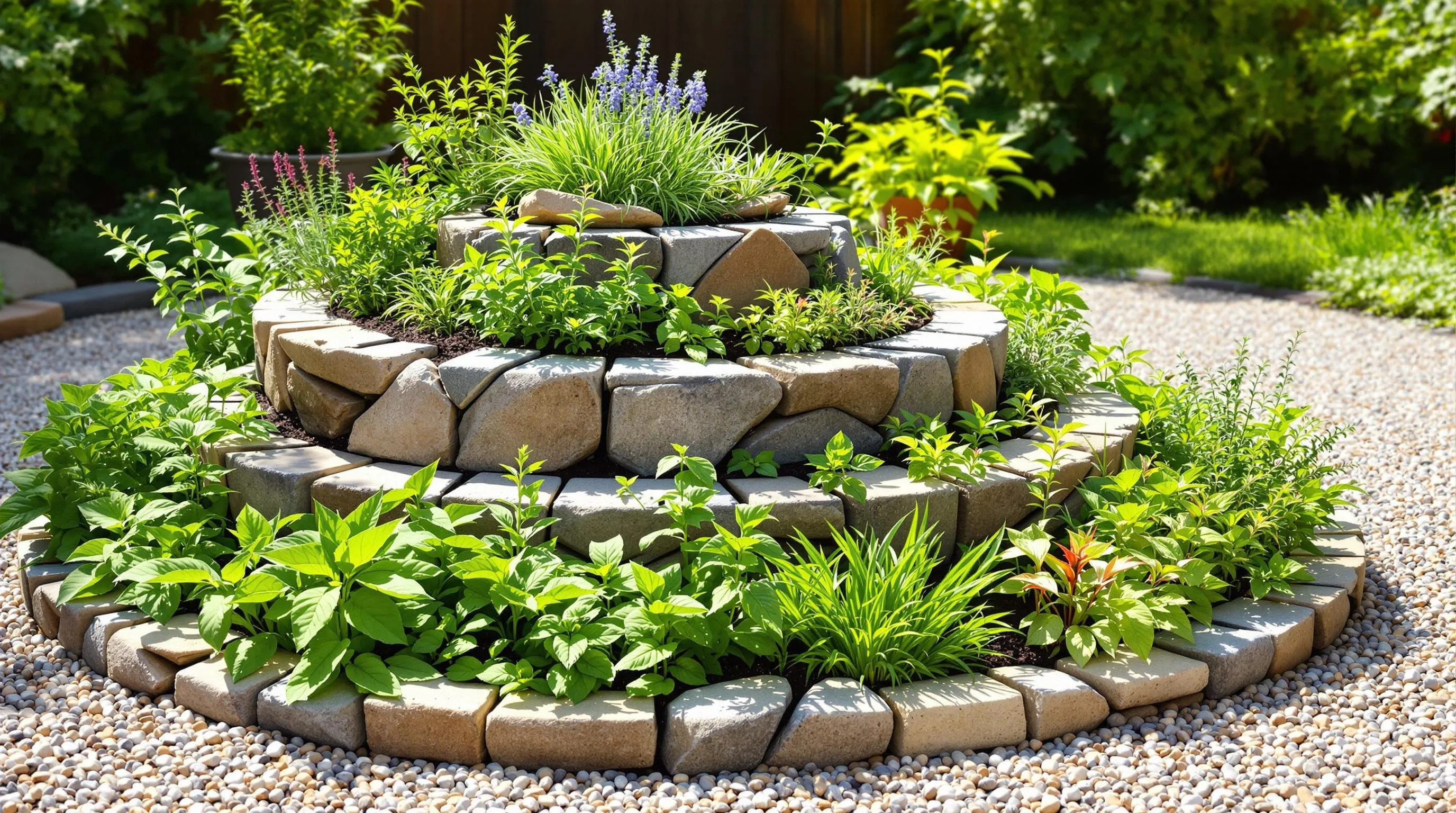
A spiral herb garden combines functionality with stunning visual appeal, creating a beautiful focal point in your outdoor space. This unique design maximizes growing area in a compact footprint while creating different microclimates for various herbs.
Planning Your Spiral Layout
Before building your spiral herb garden, select a sunny location that receives at least 6-8 hours of direct sunlight daily. Start by marking a circle approximately 5-6 feet in diameter as your base. Create your spiral path using bricks, stones, or concrete blocks, beginning from the outside and working inward while gradually increasing height toward the center. The ideal spiral should rise about 3 feet at its highest point, with each level approximately 8-12 inches wide to accommodate herb growth. Consider installing irrigation at each level during construction to ensure consistent watering. For proper drainage, add a layer of gravel at the base before filling with high-quality, well-draining soil mixed with compost.
Best Herbs for Each Level
The spiral design creates a perfect environment for herbs with different growing requirements. Plant drought-tolerant Mediterranean herbs like rosemary, sage, and thyme at the top level where conditions are drier and sunnier. The middle tiers work perfectly for basil, oregano, chives, and marjoram that prefer moderate moisture. Reserve the bottom level for moisture-loving herbs such as mint, parsley, cilantro, and chervil. This arrangement not only supports optimal growth conditions for each herb but also creates a visually stunning display with varied textures and heights. Position taller herbs like dill and fennel toward the north side to prevent them from shading smaller varieties. For year-round visual interest, incorporate perennial herbs as the backbone of your design and fill in with seasonal annuals.
Raised Bed Herb Gardens
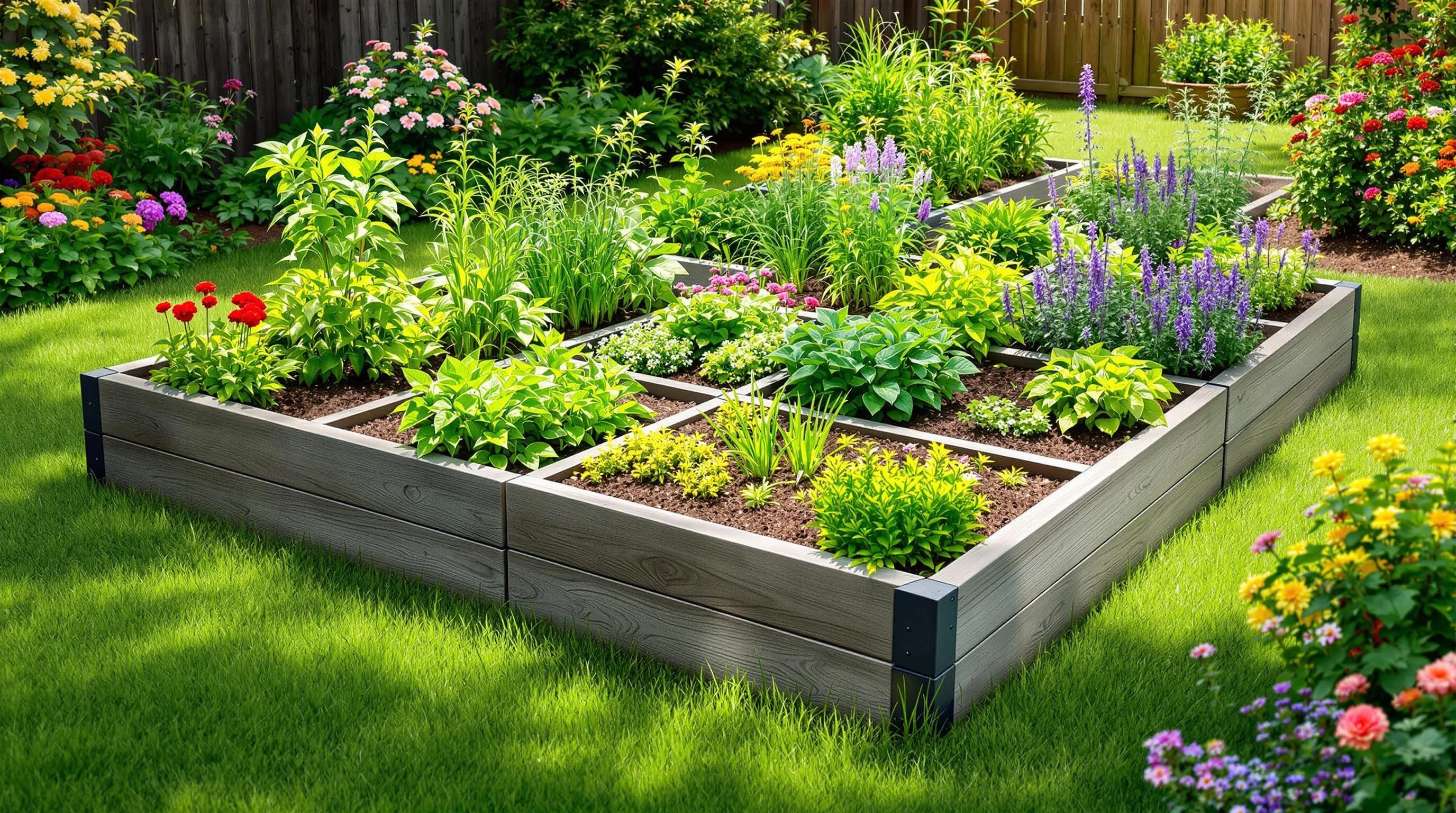
Raised bed herb gardens offer the perfect solution for growing herbs with better soil control, improved drainage, and easier maintenance. These elevated growing spaces create ideal conditions for herb cultivation while adding structure and visual appeal to your outdoor area.
Square Foot Herb Garden Planning
Square foot gardening maximizes your raised bed’s potential by dividing it into organized sections. Start by creating a grid system with string or thin wood strips, forming 1×1 foot squares across your entire bed. Allocate exact herbs to each square based on their growing needs and size – compact herbs like thyme and oregano need just one square, while larger varieties like rosemary might require four squares. Plant taller herbs like dill and fennel on the north side to prevent them from shading smaller plants. For optimal organization, install small plant markers in each square, allowing you to track what’s planted where and plan seasonal rotations effectively. This methodical approach ensures you’ll grow the perfect amount of each herb without overcrowding.
Companion Planting in Raised Beds
Strategic companion planting in your raised herb bed creates a mini network that boosts growth and naturally deters pests. Pair basil with tomatoes to improve their flavor and repel flies and mosquitoes. Plant rosemary alongside sage, cabbage, or carrots to deter cabbage moths and carrot flies. Combine chives with carrots and tomatoes to enhance their growth while deterring aphids. Oregano serves as an excellent general companion, improving the health of nearly all herbs when planted throughout your raised bed. Add nasturtiums along the edges of your herb bed to attract beneficial insects while serving as a trap crop for aphids. This thoughtful arrangement not only maximizes your harvest but also reduces the need for chemical interventions, creating a more sustainable and productive herb garden.
Indoor Hydroponic Herb Gardens
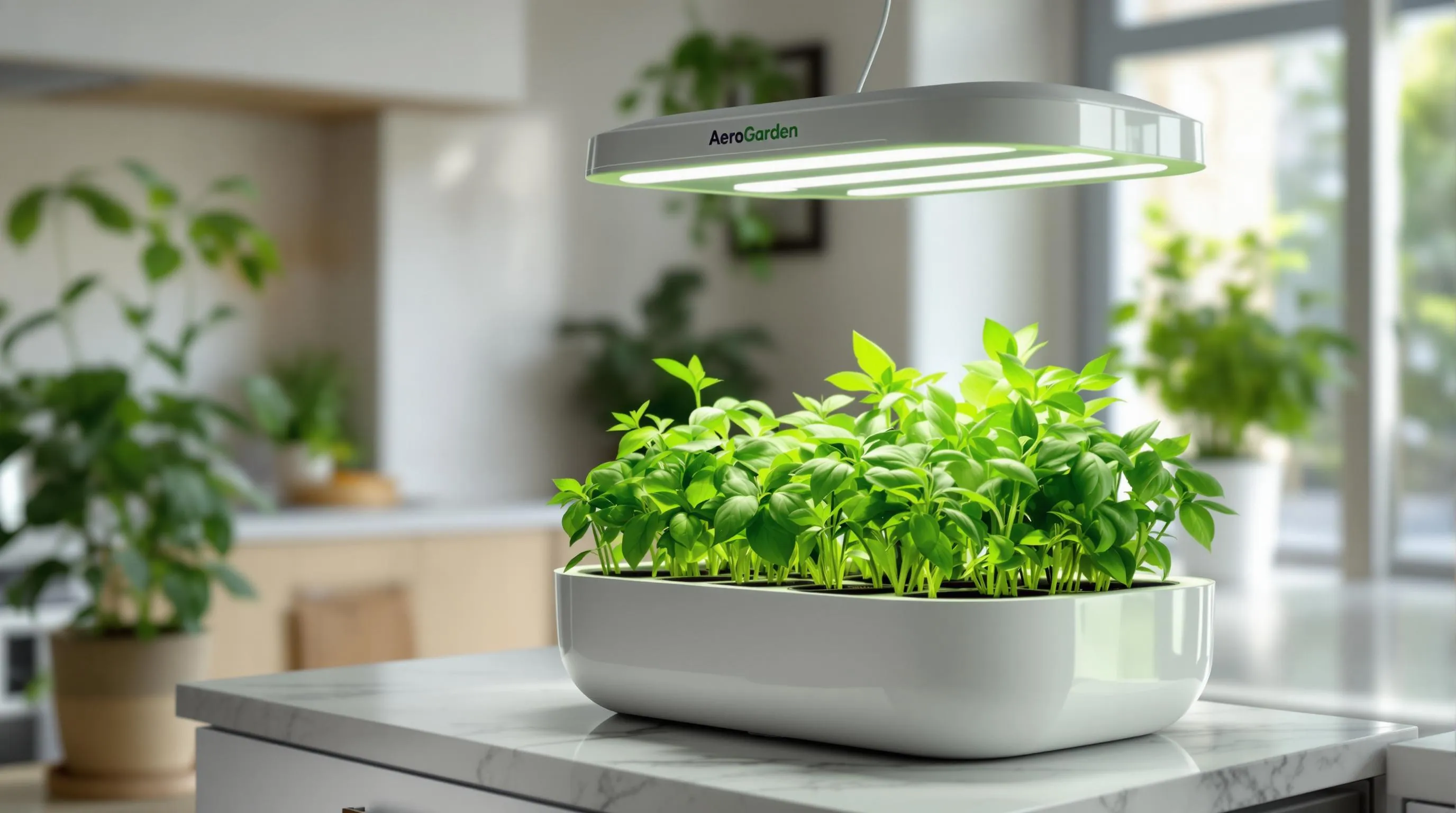
Hydroponic herb gardens offer a soil-free growing method that’s perfect for indoor spaces, allowing you to grow fresh herbs year-round regardless of weather conditions. These systems deliver nutrients directly to plant roots through water, resulting in faster growth and higher yields than traditional soil gardening.
Starter Hydroponic Systems
Beginner-friendly hydroponic kits make it easy to start growing herbs without soil. AeroGarden countertop systems provide everything you need including built-in LED grow lights, pre-seeded pods, and automatic timers for foolproof growing. Window-mounted hydroponic planters like the Window Leaf or Windowfarms use natural light and take up minimal space while creating a living display. Mason jar hydroponics offer an affordable DIY option—simply add a net pot lid to a jar, fill with nutrient solution, and insert herb seedlings. These starter systems typically accommodate 3-6 plants, perfect for apartments or small kitchens where space is limited.
Low-Maintenance Hydroponic Options
Wick systems require virtually no technical knowledge as they passively draw nutrient solution to plant roots through capillary action. Deep water culture (DWC) systems suspend plant roots directly in nutrient-rich water with an air stone providing oxygen, eliminating the need for frequent watering. Self-monitoring smart gardens like Click & Grow or iDOO automatically adjust lighting schedules and nutrient delivery based on plant needs. For busy herb enthusiasts, nutrient film technique (NFT) systems circulate a thin film of nutrient solution over roots using a small pump that operates for months with minimal attention. These low-maintenance options typically need only weekly water top-offs and monthly nutrient changes, making fresh herbs accessible even for those with hectic schedules.
Tiered Herb Garden Displays
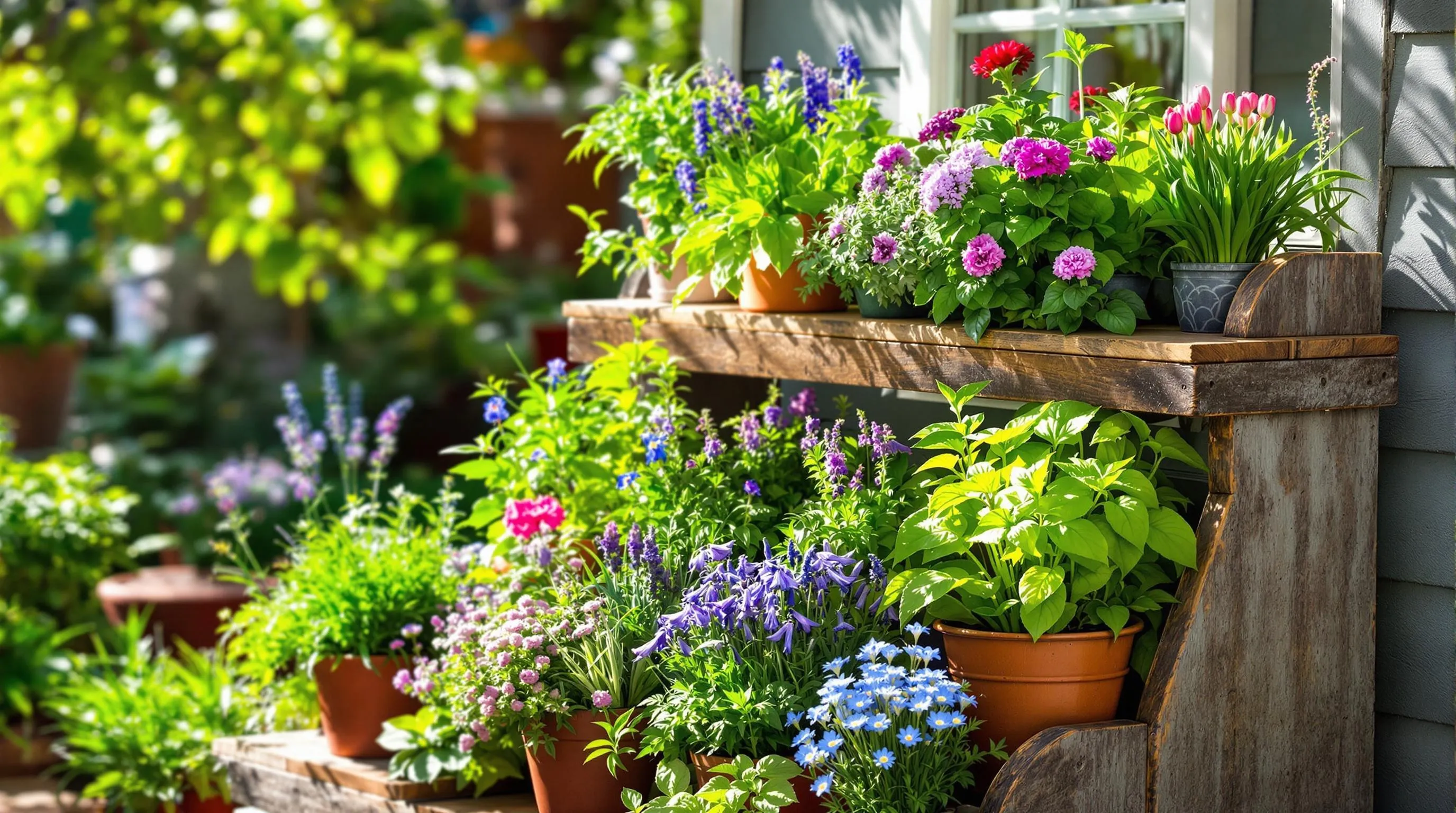
Tiered herb gardens create stunning vertical displays that maximize growing space while adding architectural interest to your garden. These multi-level arrangements allow you to showcase your herb collection in an organized, accessible way that makes harvesting a breeze.
Creating Visual Interest with Height
Tiered displays transform ordinary herb collections into eye-catching focal points by utilizing different heights to create dimension. Arrange your herbs with taller varieties like rosemary and lavender at the back or center, then cascade down to medium-height plants like basil and sage, finishing with trailing herbs such as thyme and oregano at the edges. This strategic positioning creates a natural flow that guides the eye throughout your display. For added visual impact, incorporate herbs with contrasting foliage colors—pairing silver-leaved sage with purple basil or golden oregano with deep green parsley. Consider adding flowering herbs like chives or borage at various levels to introduce pops of color that attract beneficial pollinators to your garden.
Space-Efficient Tiered Designs
Tiered designs maximize growing capacity in limited spaces by building upward rather than outward. Stepped plant stands work brilliantly for patios and balconies, allowing you to grow 2-3 times more herbs than traditional flat arrangements. Repurposed ladders make excellent tiered displays—simply secure pots to each rung or add small shelves for a rustic look. For DIY enthusiasts, stacked crates or wooden boxes create customizable tiers that can be adjusted based on your space. Corner tiered planters are particularly effective for small gardens, utilizing often-neglected spaces while providing different sun exposure levels for herbs with varying light requirements. Consider installing wheels on the bottom tier of freestanding displays to easily relocate your herb garden based on seasonal sun patterns or when entertaining outdoors.
Herb Garden Wheels and Carts
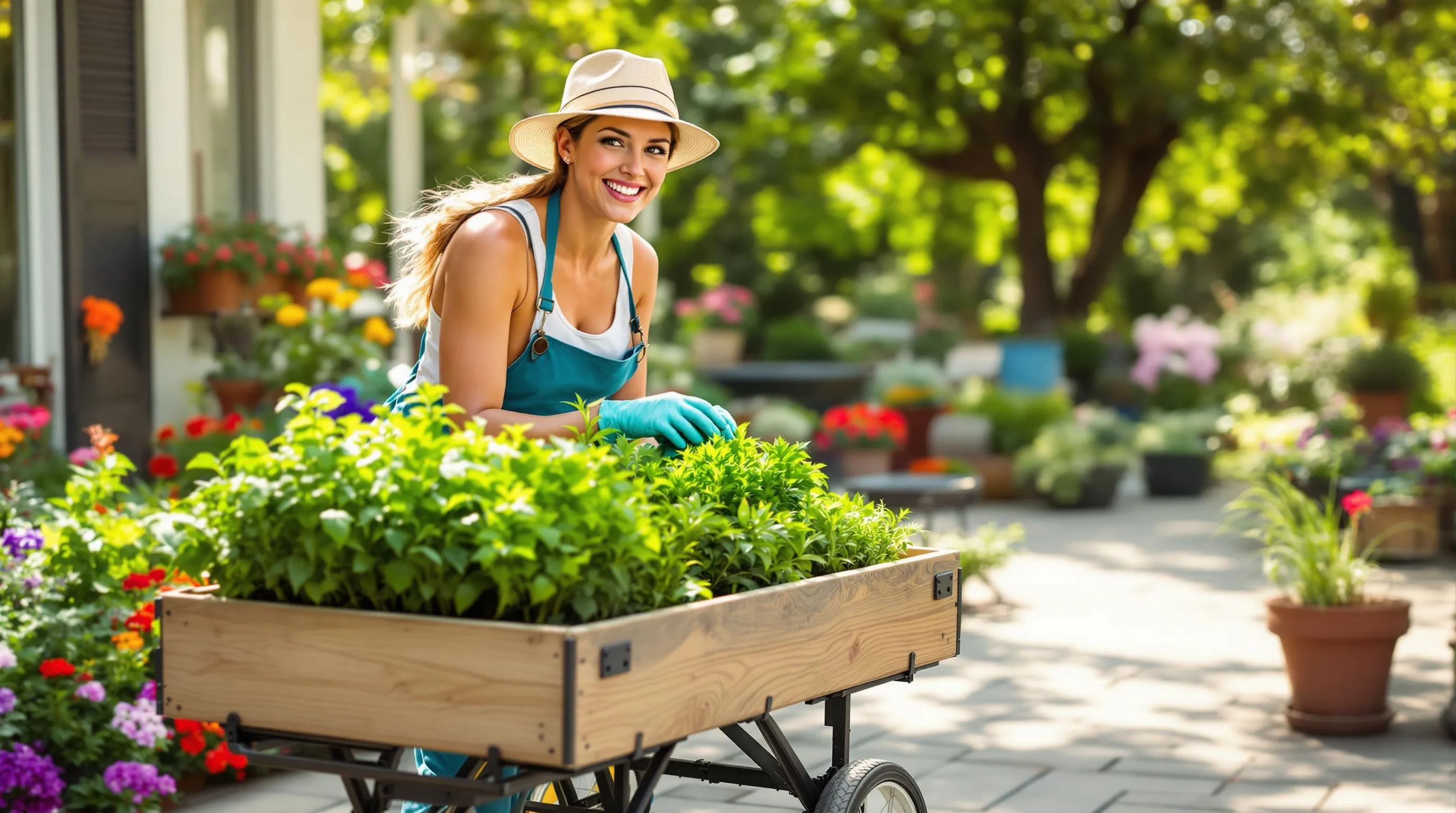
Herb garden wheels and carts offer flexibility and convenience for growing your favorite culinary and medicinal plants. These mobile gardens combine practicality with charm, allowing you to optimize growing conditions by moving your herbs to follow the sun or protect them from harsh weather.
Movable Garden Answers
Transform any outdoor space with wheeled herb planters that provide ultimate gardening flexibility. Repurposed bar carts, tea trolleys, and vintage wagons make stylish and functional herb gardens that you can roll wherever needed. Choose carts with multiple tiers to maximize growing space—place sun-loving herbs like rosemary and thyme on top shelves while shade-preferring mint and parsley can thrive on lower levels. For smaller spaces, consider compact rolling plant stands with lockable wheels that prevent unwanted movement during watering. DIY enthusiasts can add wheels to wooden crates or old drawers for budget-friendly mobile gardens that showcase your herbs while allowing for easy repositioning as seasons change.
Weather Protection Strategies
Wheeled herb gardens excel at providing quick protection during unpredictable weather events. During sudden rainstorms, simply roll your herb cart under a covered porch or into a garage to prevent waterlogging. When frost threatens, move your mobile garden indoors overnight to extend your growing season by several weeks. For hot summer days, roll your herbs to partially shaded areas during peak afternoon heat to prevent wilting and stress. Many gardeners outfit their herb carts with removable clear plastic covers or small hoop attachments that create mini-greenhouses for cooler days. The mobility aspect of wheeled gardens also allows you to adjust your herbs’ exposure as the sun’s position changes throughout the year, ensuring optimal growth conditions regardless of season.
Maintaining Your Herb Garden Year-Round
Starting your herb garden is just the beginning of a rewarding journey. Whether you’ve chosen a spiral design, hydroponic system, or repurposed containers, the key to success lies in consistent care and adaptability.
Remember that herbs are resilient plants that will thrive with proper light, water, and occasional trimming. Regular harvesting actually encourages bushier growth, giving you both culinary ingredients and healthier plants.
Don’t be afraid to experiment with different arrangements as your skills grow. The beauty of herb gardening is its flexibility—you can start small and expand as your confidence increases.
With the ideas shared here you’ll have fresh herbs at your fingertips year-round. Your herb garden will become not just a source of flavors but a living expression of your creativity and care.


